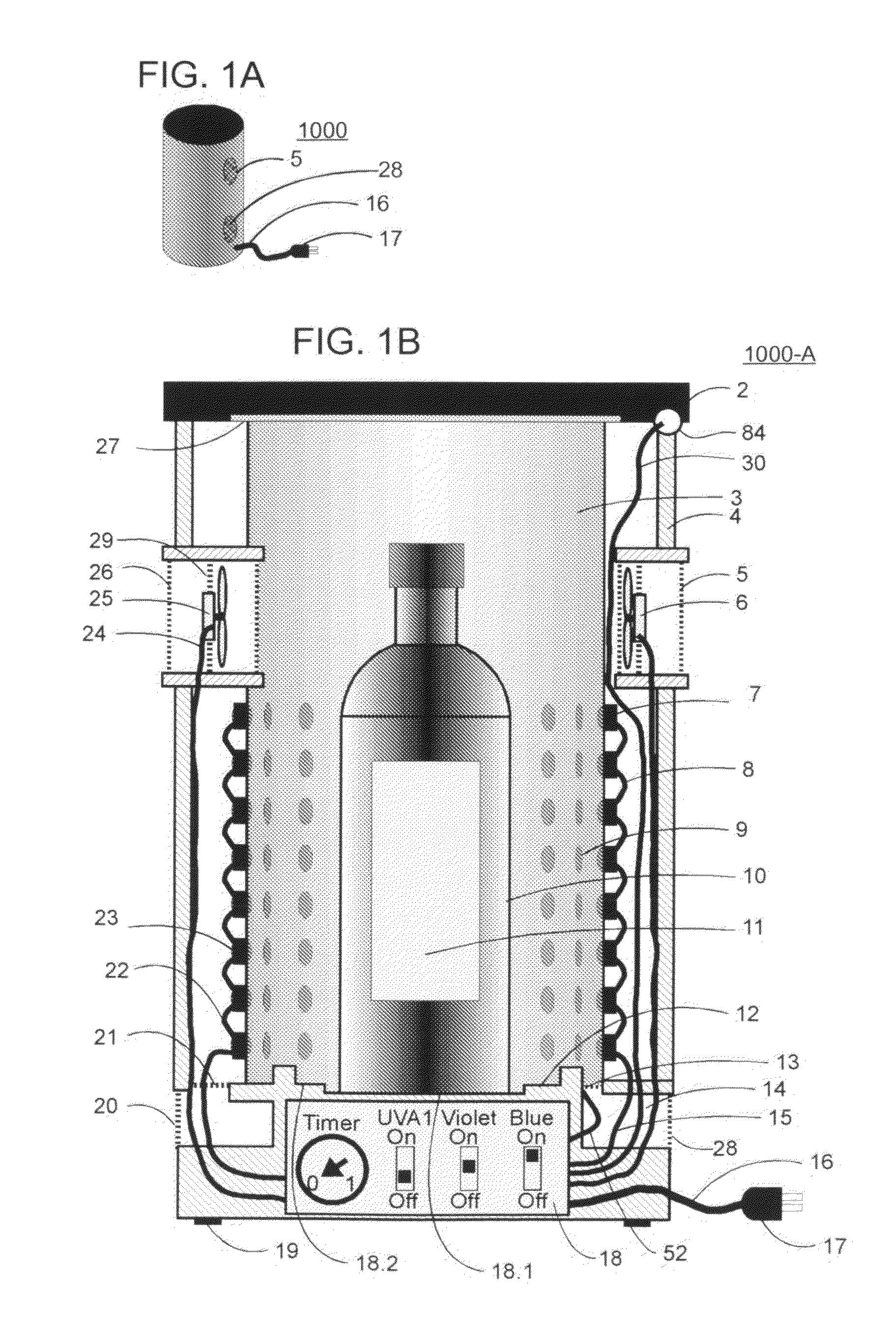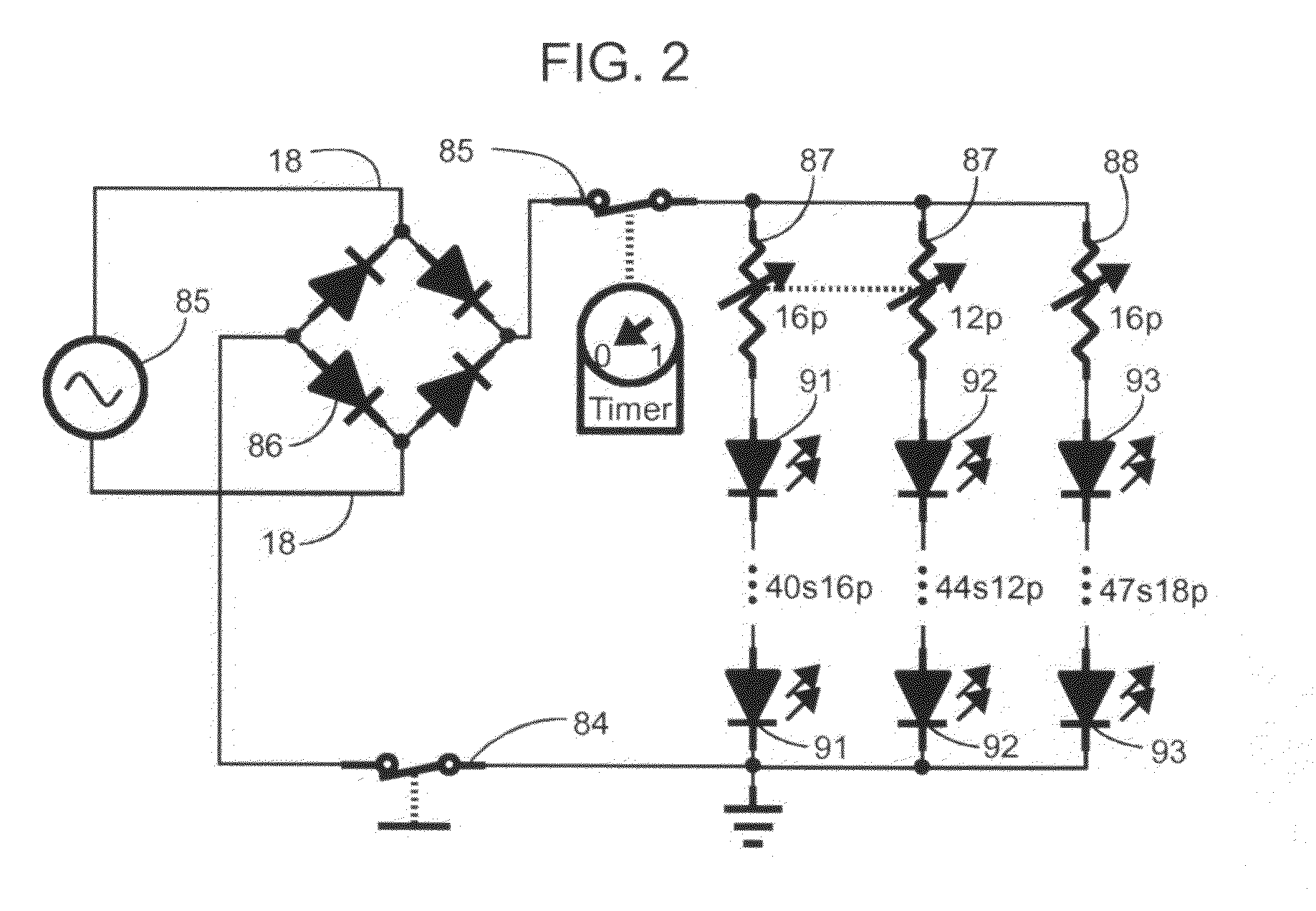Photonic wine processor
a photonic wine and processor technology, applied in the field of photonic wine processors, can solve the problems of affecting the quality of wine, affecting the taste of wine, so as to increase the output power of photonic beverage processors and/or more time, increase the effective light power output, and reduce the process duration
- Summary
- Abstract
- Description
- Claims
- Application Information
AI Technical Summary
Benefits of technology
Problems solved by technology
Method used
Image
Examples
experiment 1
[0160]An open cup form-factor photonic beverage processor with an effective output of 0.374 Watts of UVA1 with Redwood Creek California Merlot Frei Brothers Vineyard Vintage 2007 Alcohol 13.5% by volume. This was a bottle opened the previous day and there was three quarters of the bottle remaining. A typical wine cup was used with an opening 2.75 inches wide, a depth of 3.25 inches, and a full volume of 8.0 ounces. Two substantially identical cups were used and the wine was poured 60 milliliters in each cup. One cup was allowed to sit with just air and a dummy aluminum foil cap, the other cup had the UVA1 LED with a peak wavelength of approximately 365 nm. Every 10 minutes the cups were stirred with two different but similar spoons. After 15 minutes it was discernible that the UVA1 LED modified the organoleptic properties of the red wine. After 5 minutes, it was readily discernible by taste that the there was a difference in the two cups. A blinding randomization of the cups was use...
experiment 2
[0161]An open cup form-factor photonic beverage processor with an effective output of 0.374 Watts of UVA1 with Redwood Creek California Merlot bottled by Frei Brothers Vineyard Vintage 2007 Alcohol 13.5% by volume using the leftover from the same bottle that was opened two days previously. The light-source had a peak wavelength of 365 nm, a 60 milliliter volume of wine was used, a duration of 30 minutes, without stirring. This experiment was performed on the remaining one-quarter bottle. The wine was already exposed to air for two days, so that the difference was not as noticeable as the Experiment 1, but was instead a slightly less discernible difference than wine that was just opened immediately prior to light processing. This experiment confirmed that UVA1 was an effective wavelength range for the photonic processing of red wine.
experiment 3
[0162]An open cup form-factor photonic beverage processor with an effective output of 0.374 Watts of UVA1 with Black Swan Cabernet Sauvignon Australia 2008. The light-source had a peak wavelength of 365 nm, a 60 milliliter volume of wine was used, a duration of 30 minutes, without stirring. The cups were marked on the bottom and the cups were randomized, and the cup with the exposure was discernible in 80 percent of the tests. This bottle was not previously opened. This experiment re-confirmed that UVA1 was an effective wavelength range for the photonic processing of red wine.
PUM
 Login to View More
Login to View More Abstract
Description
Claims
Application Information
 Login to View More
Login to View More - R&D
- Intellectual Property
- Life Sciences
- Materials
- Tech Scout
- Unparalleled Data Quality
- Higher Quality Content
- 60% Fewer Hallucinations
Browse by: Latest US Patents, China's latest patents, Technical Efficacy Thesaurus, Application Domain, Technology Topic, Popular Technical Reports.
© 2025 PatSnap. All rights reserved.Legal|Privacy policy|Modern Slavery Act Transparency Statement|Sitemap|About US| Contact US: help@patsnap.com



